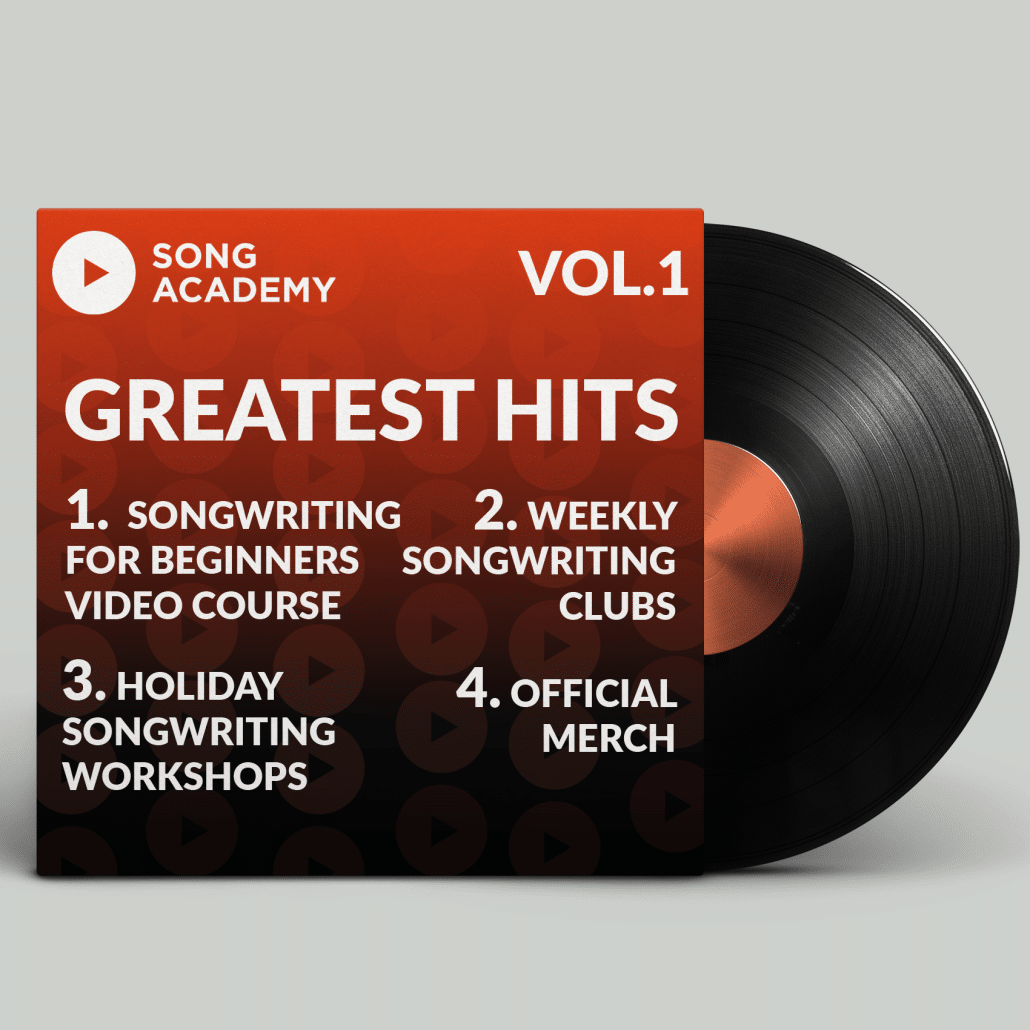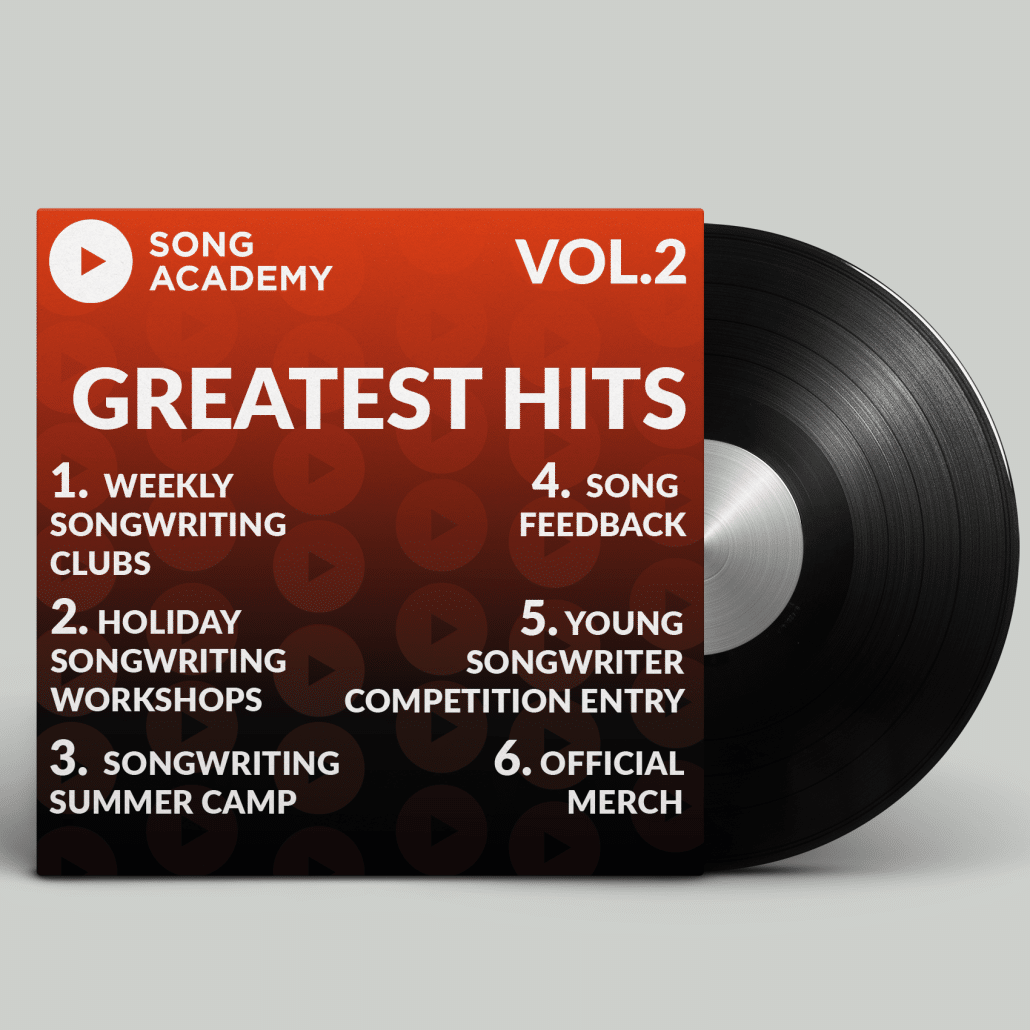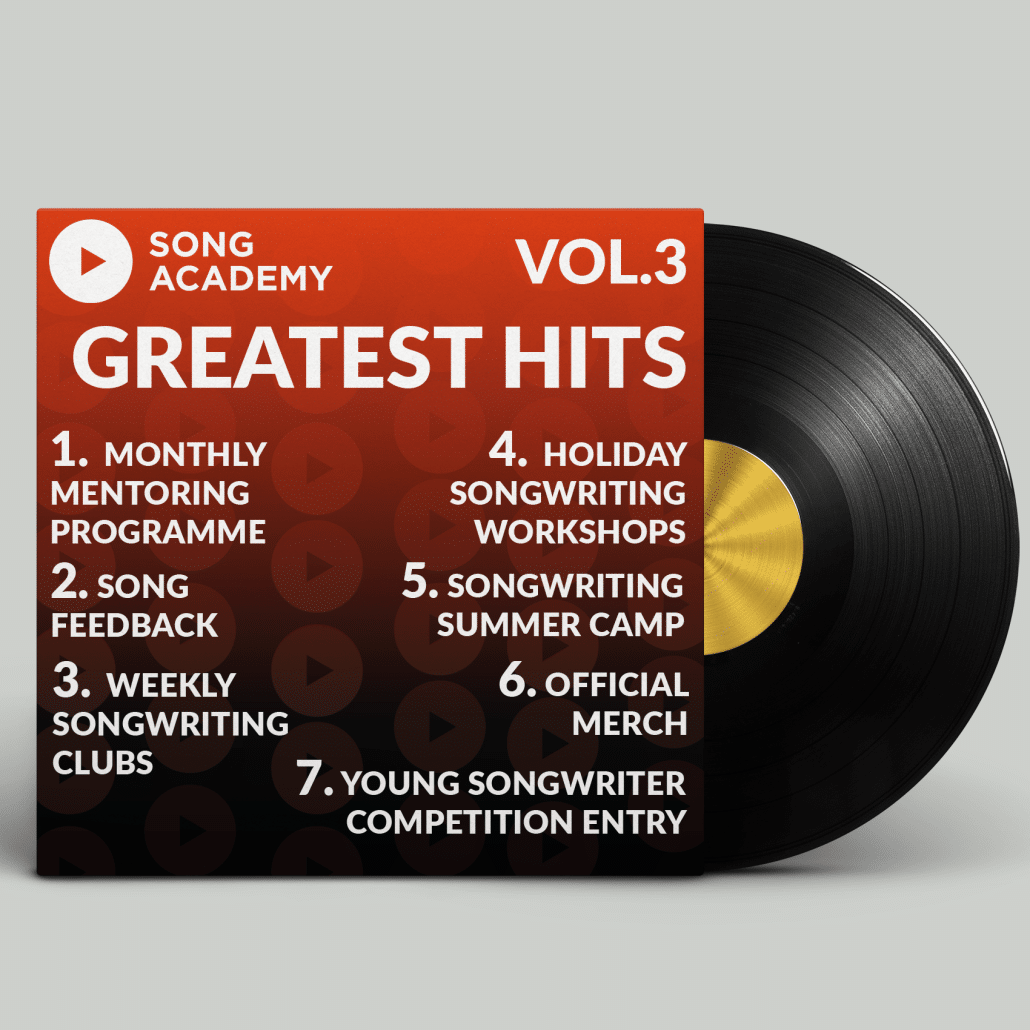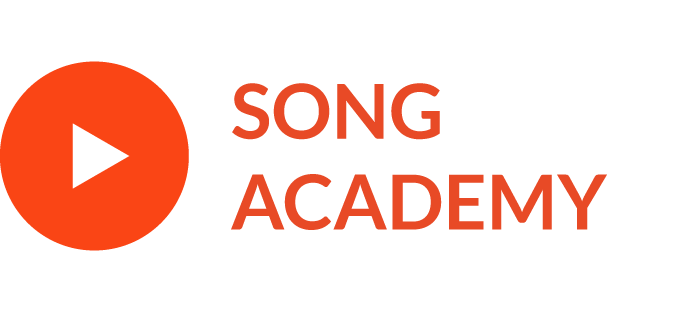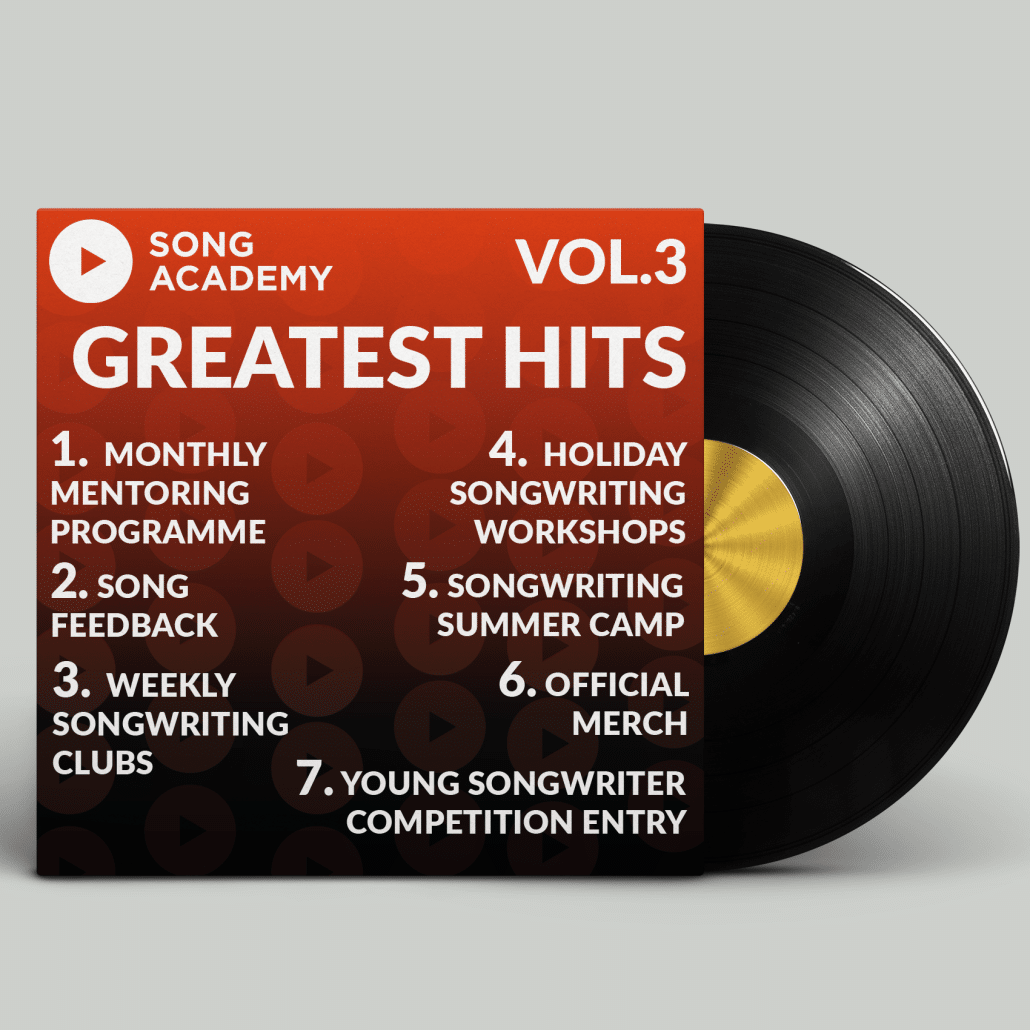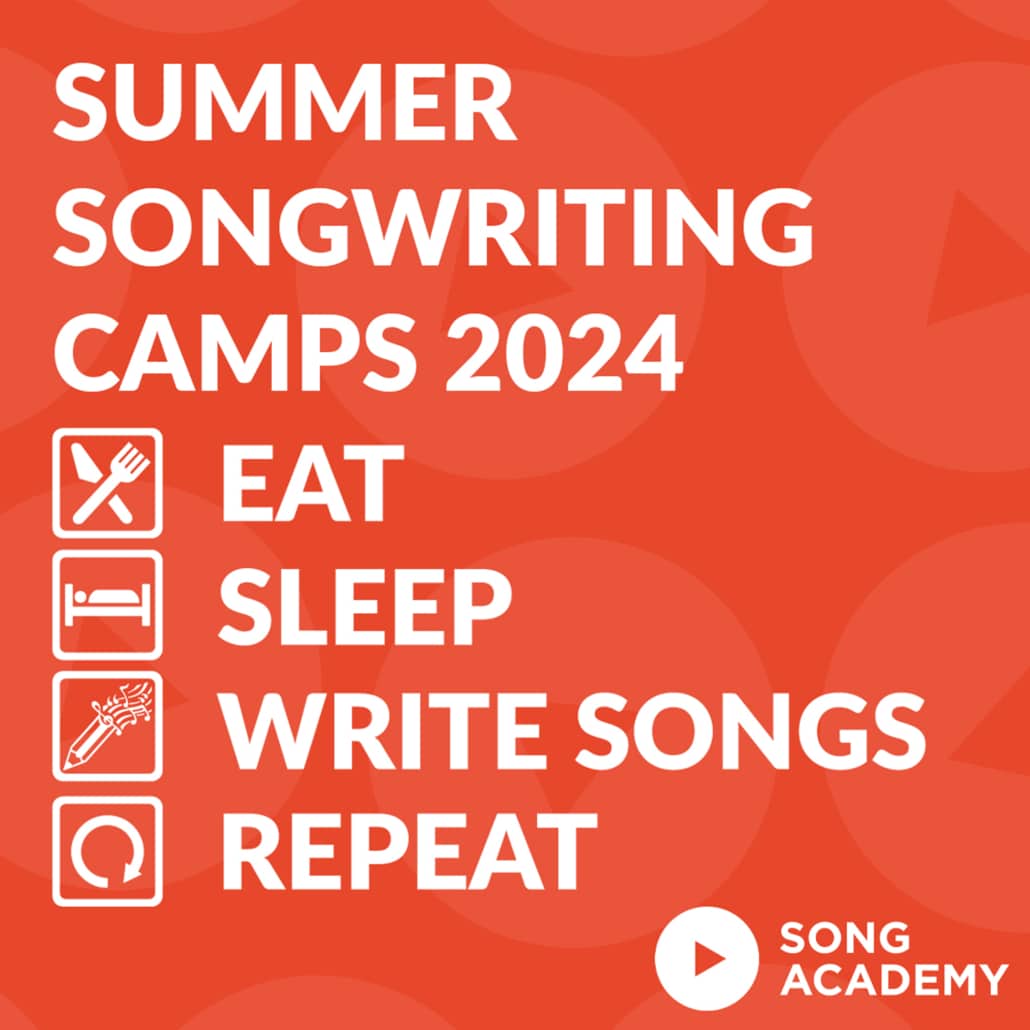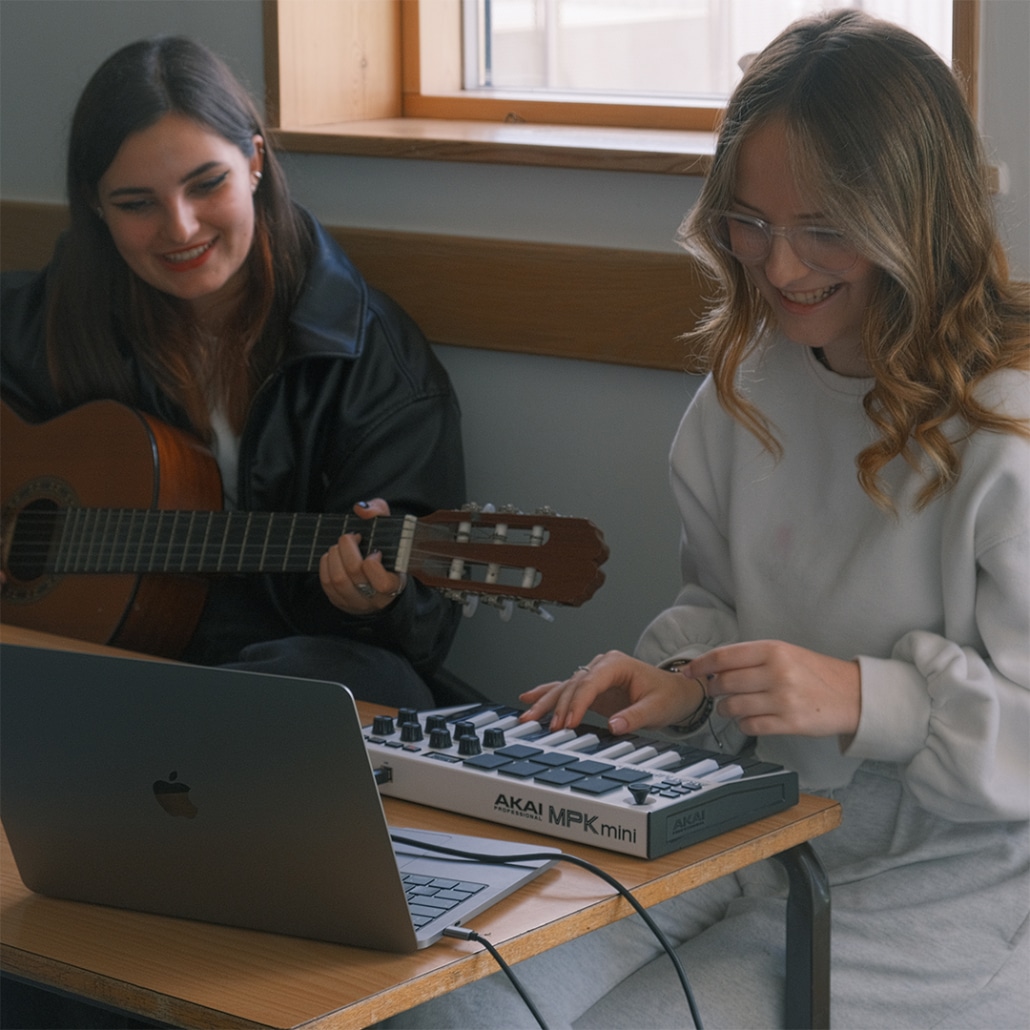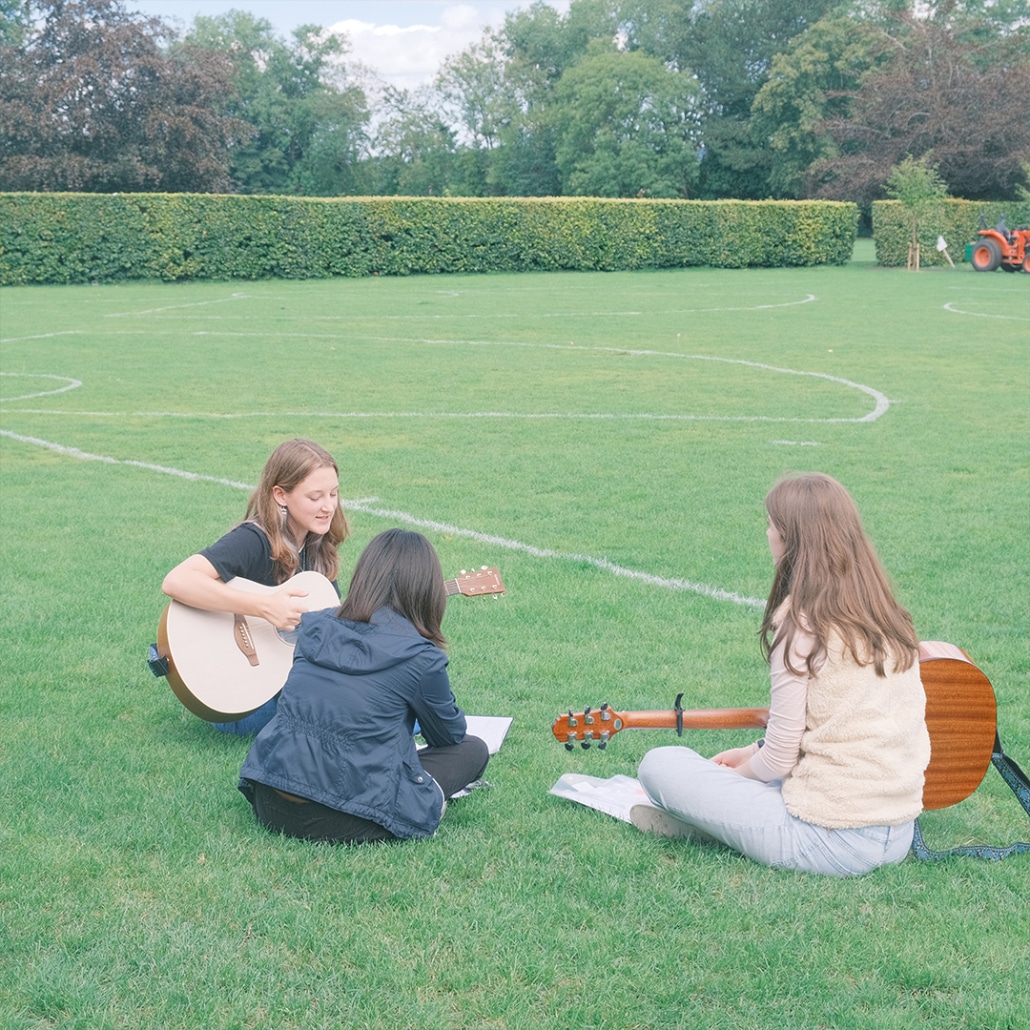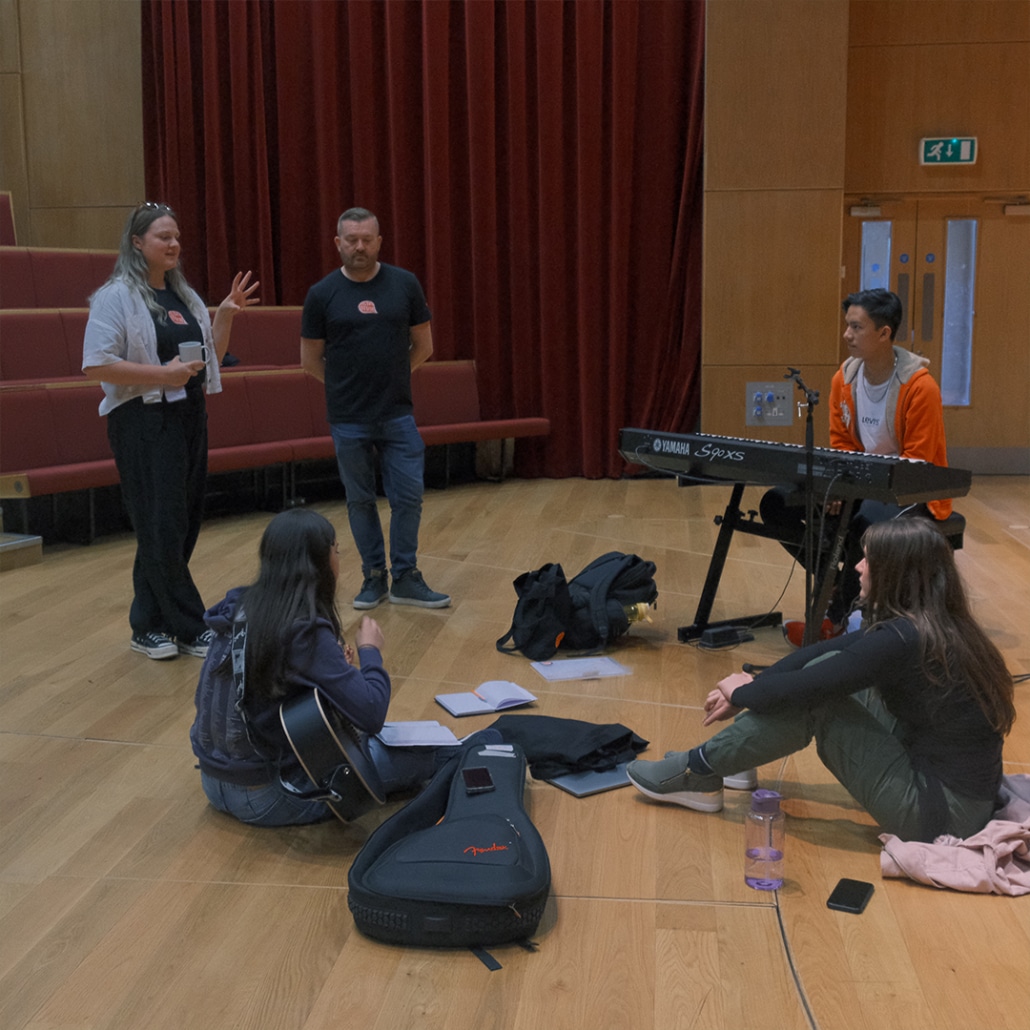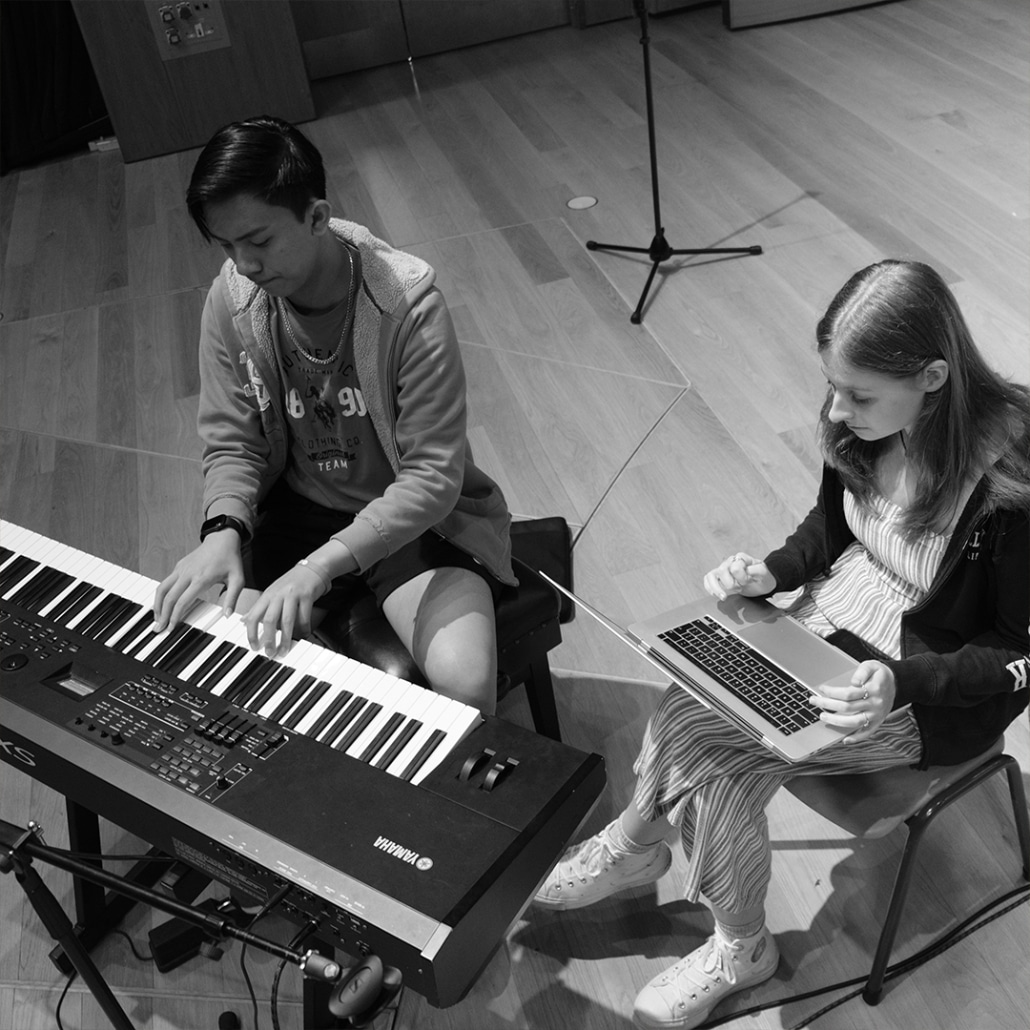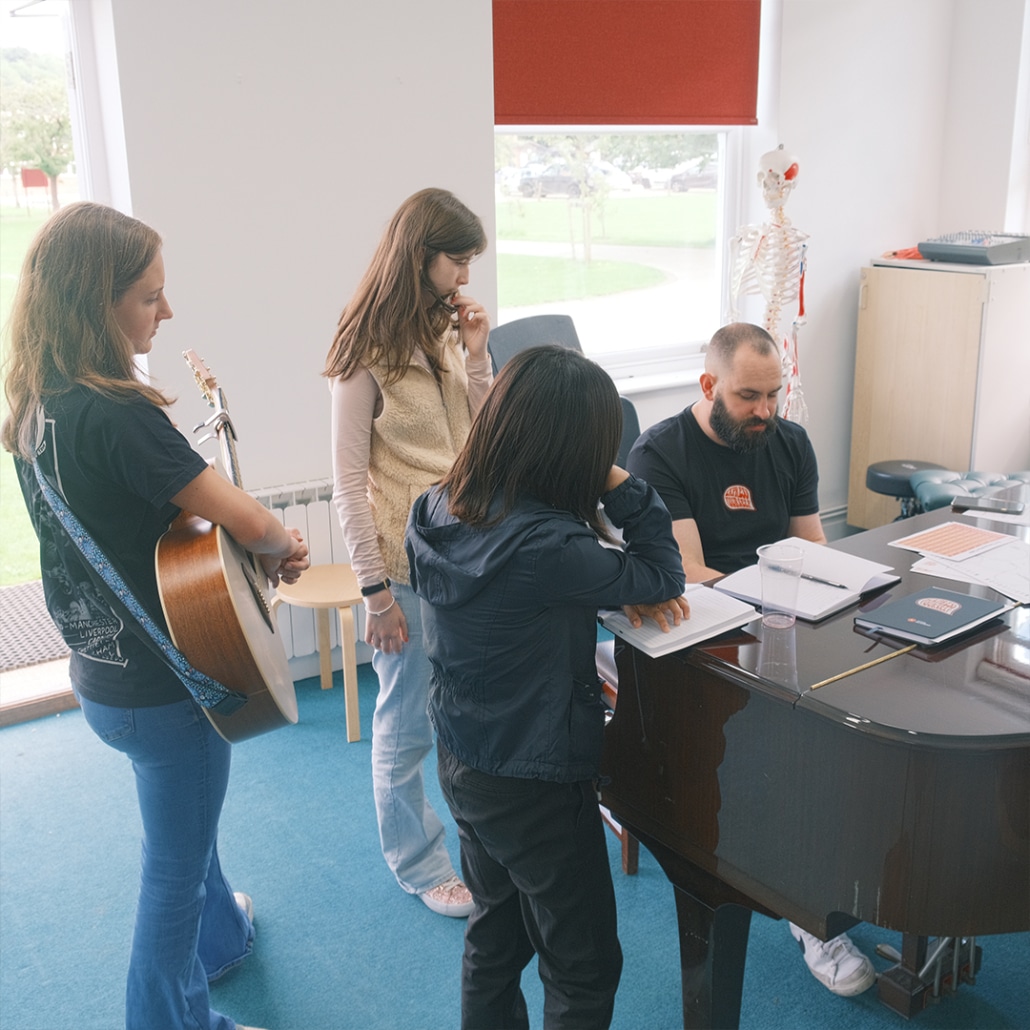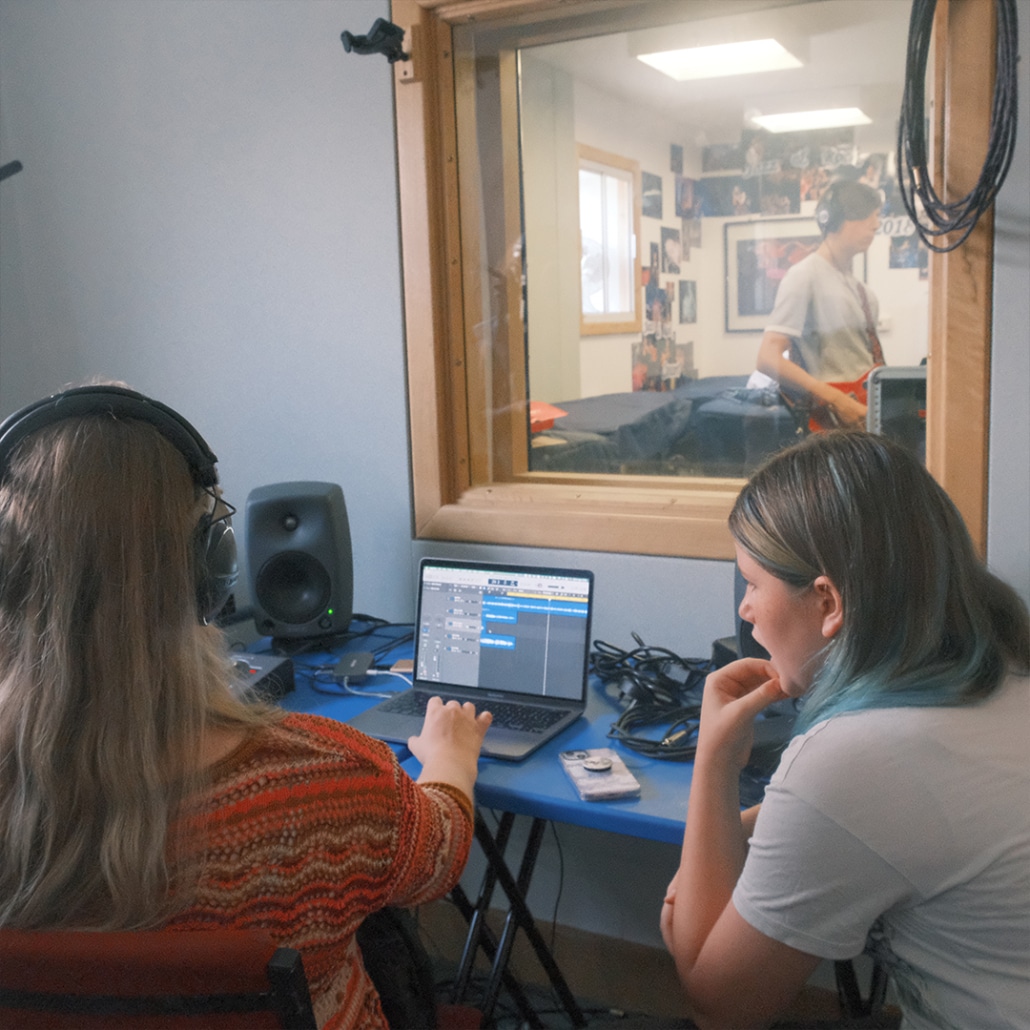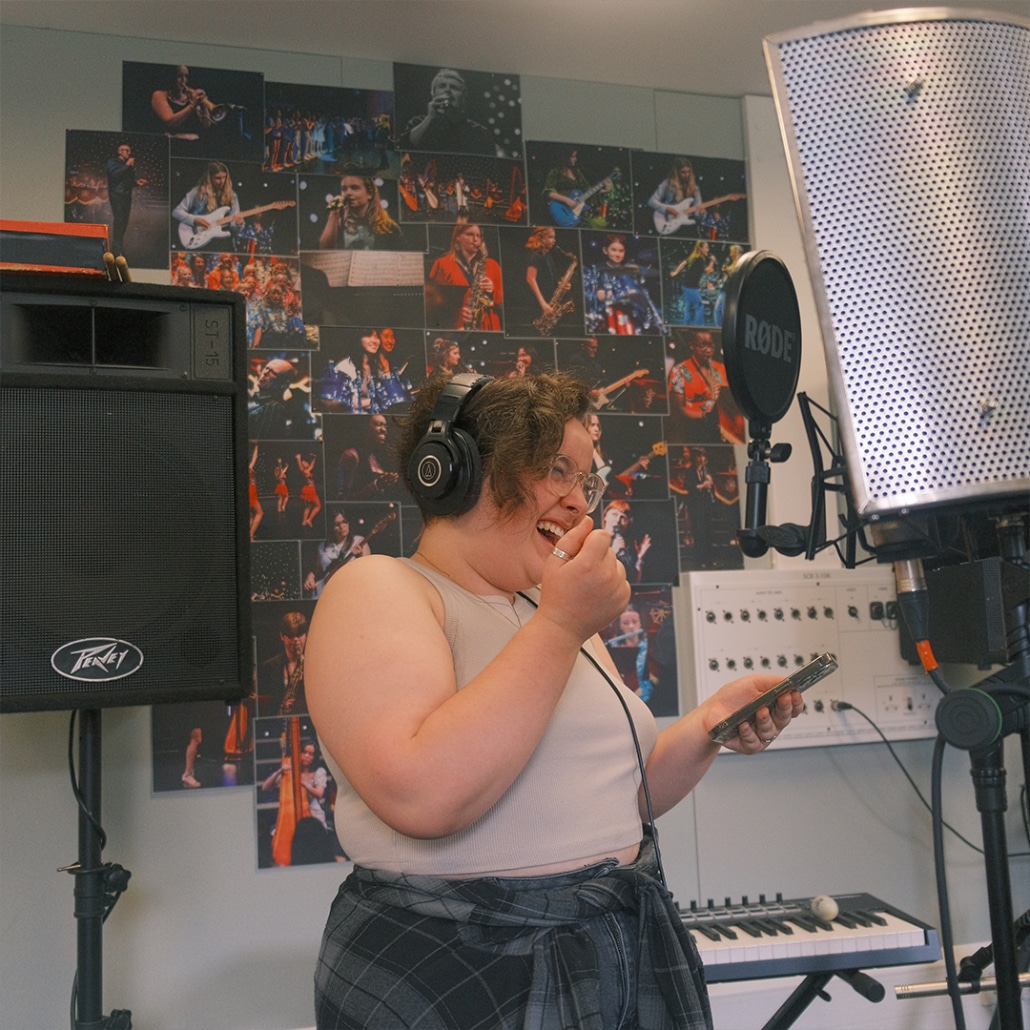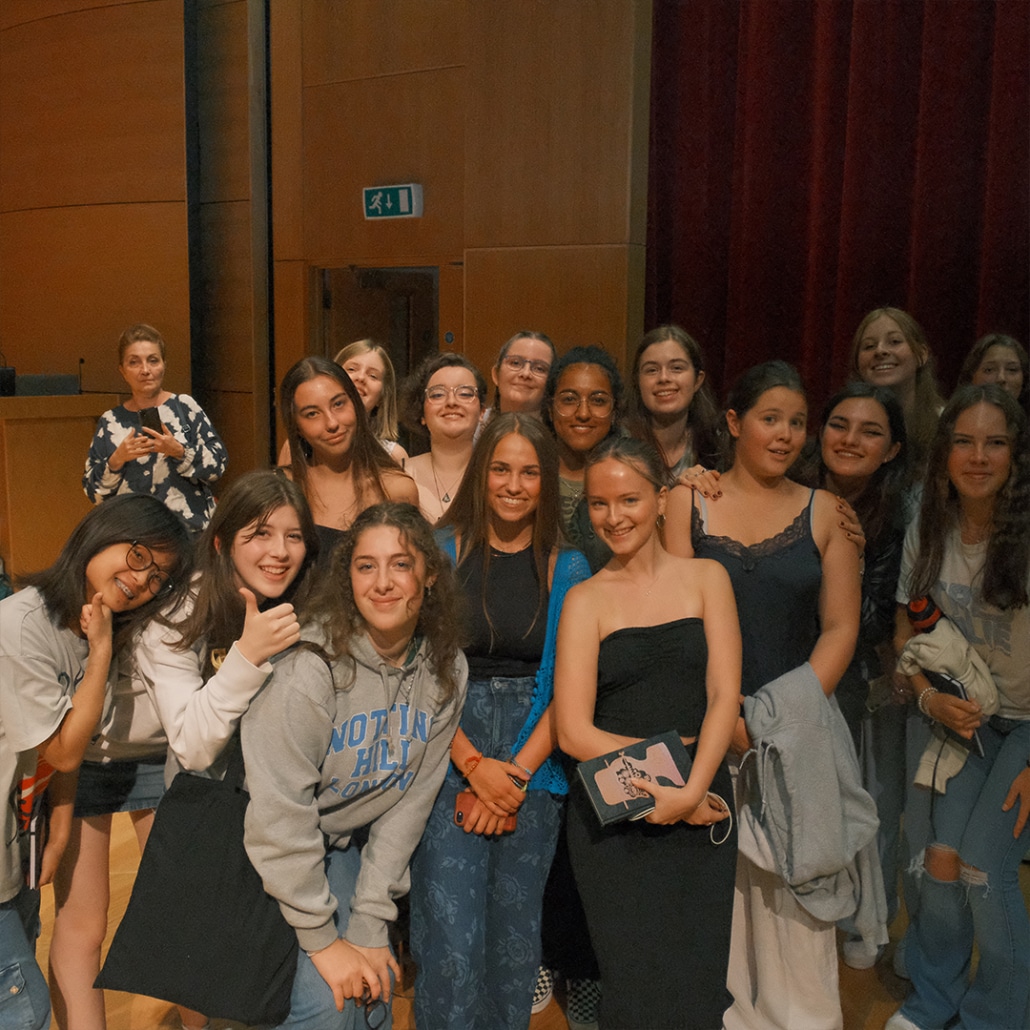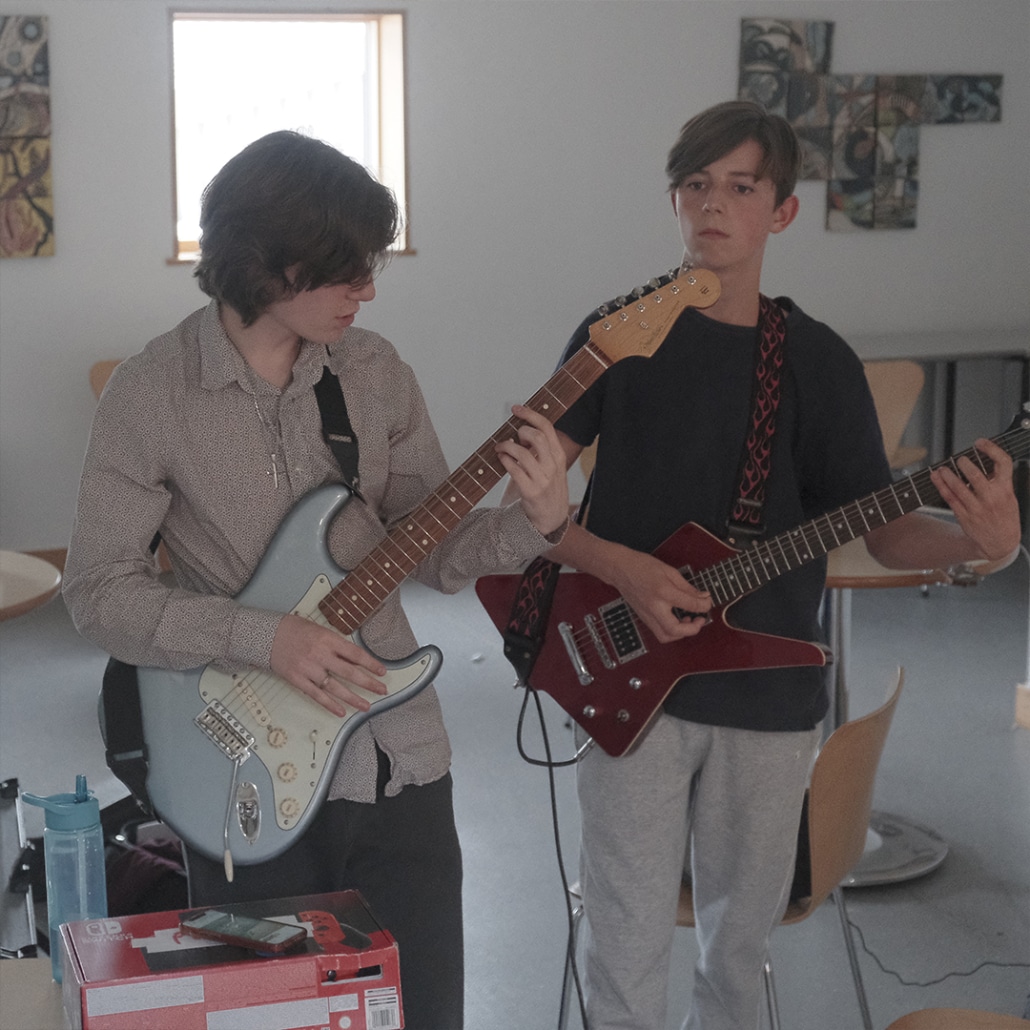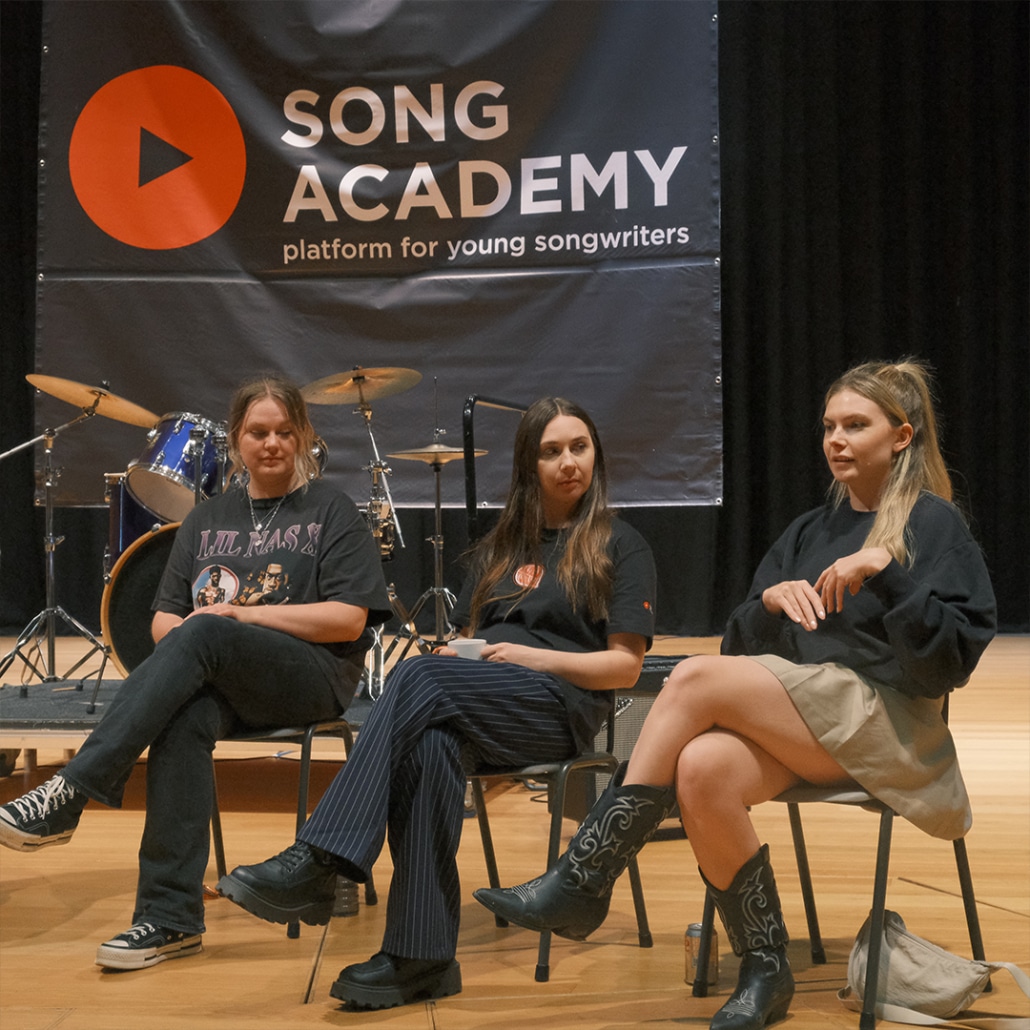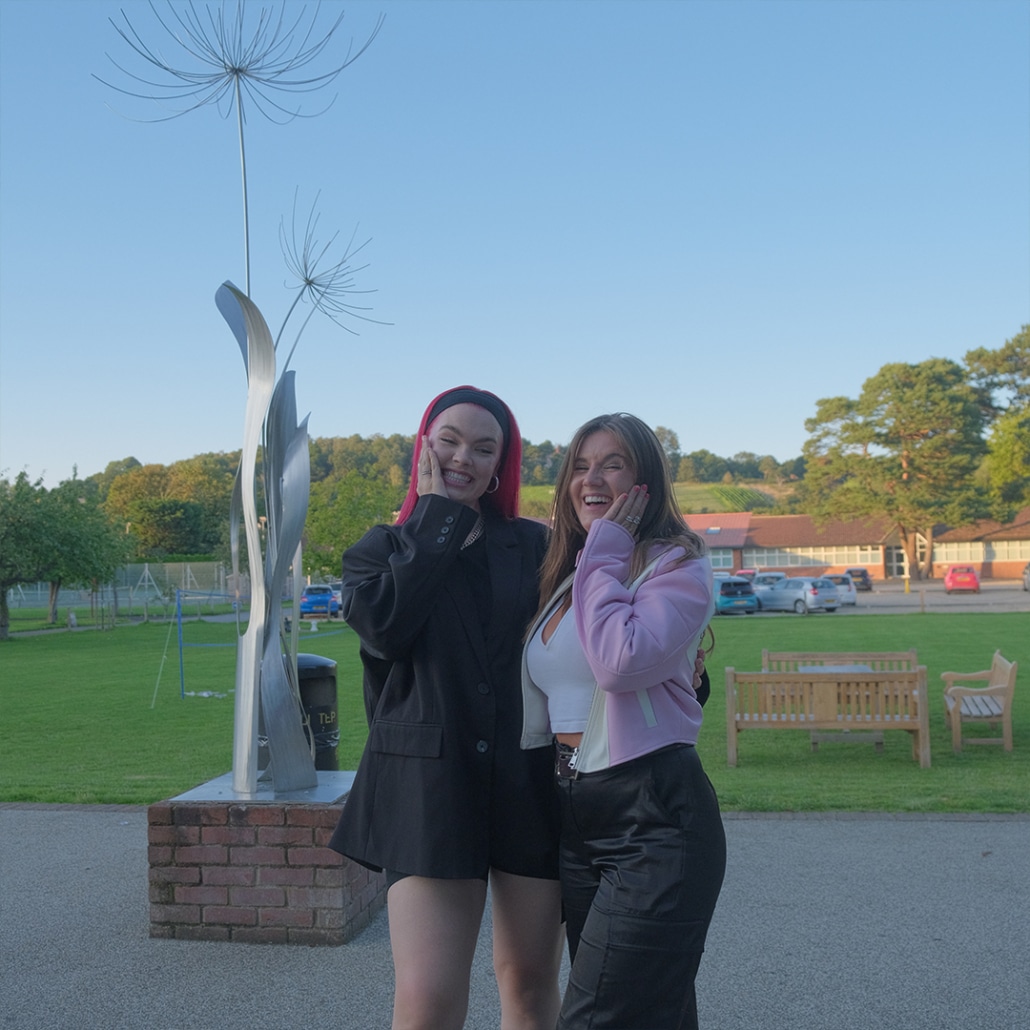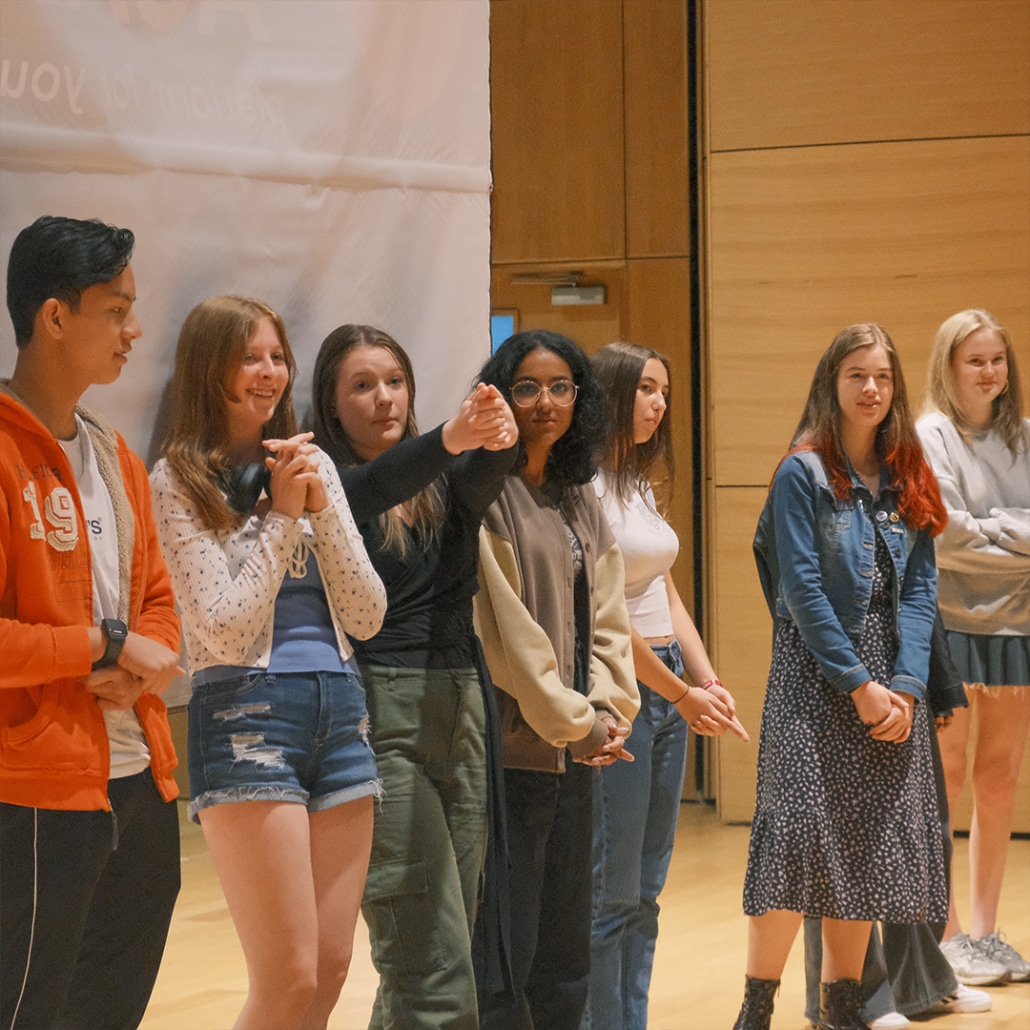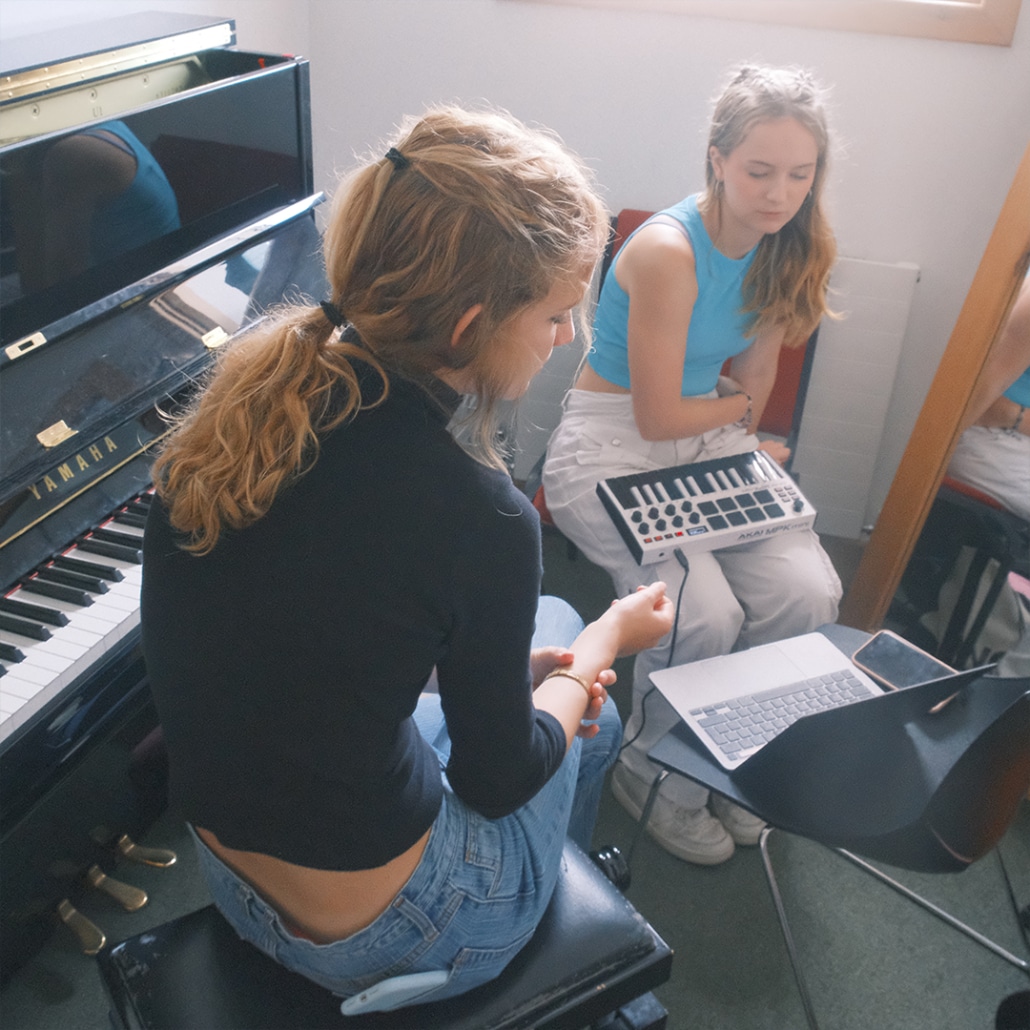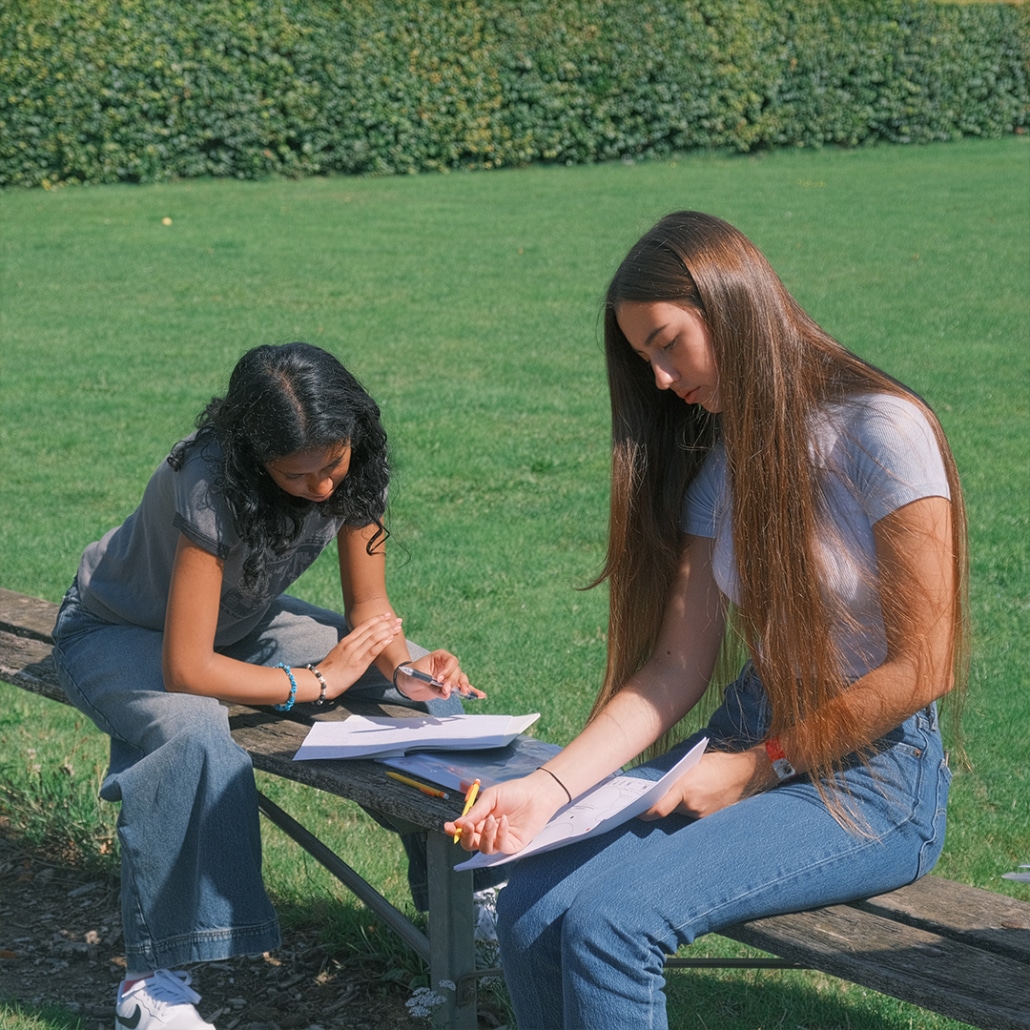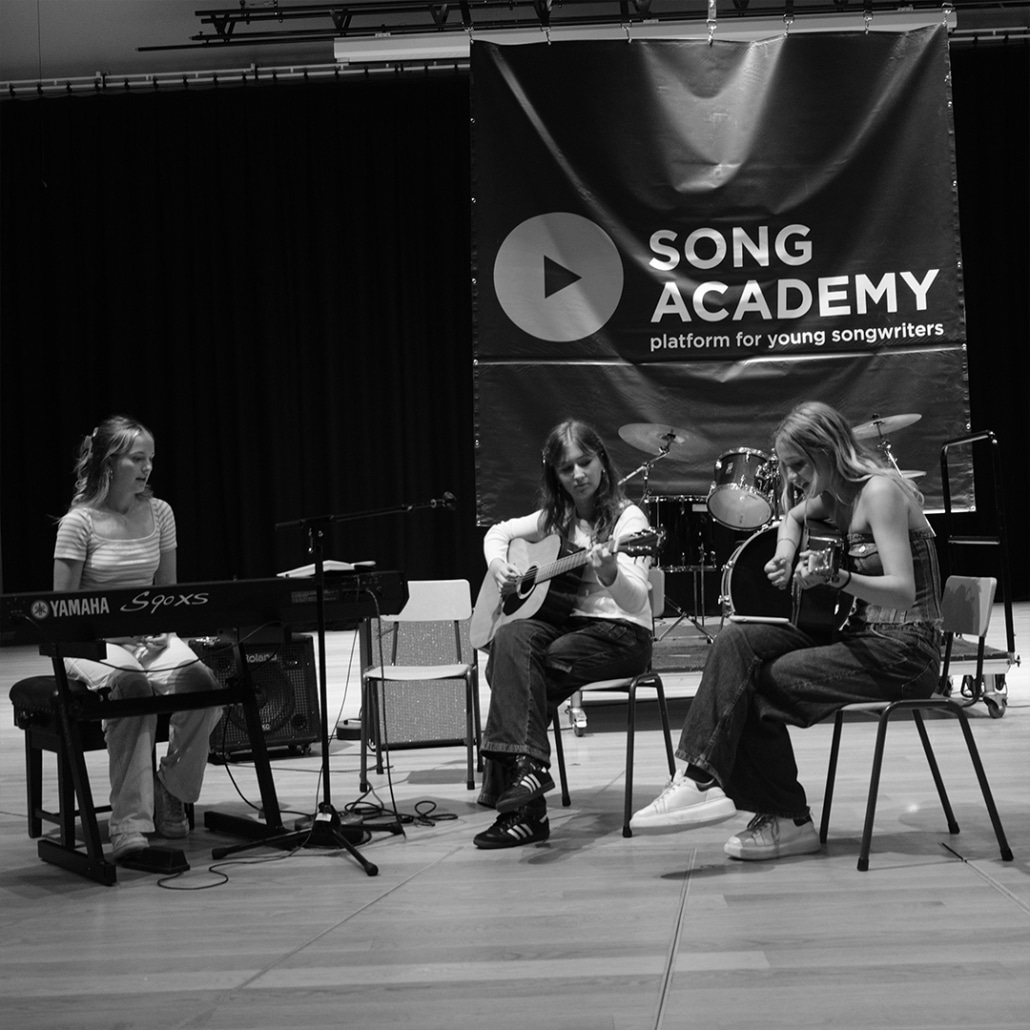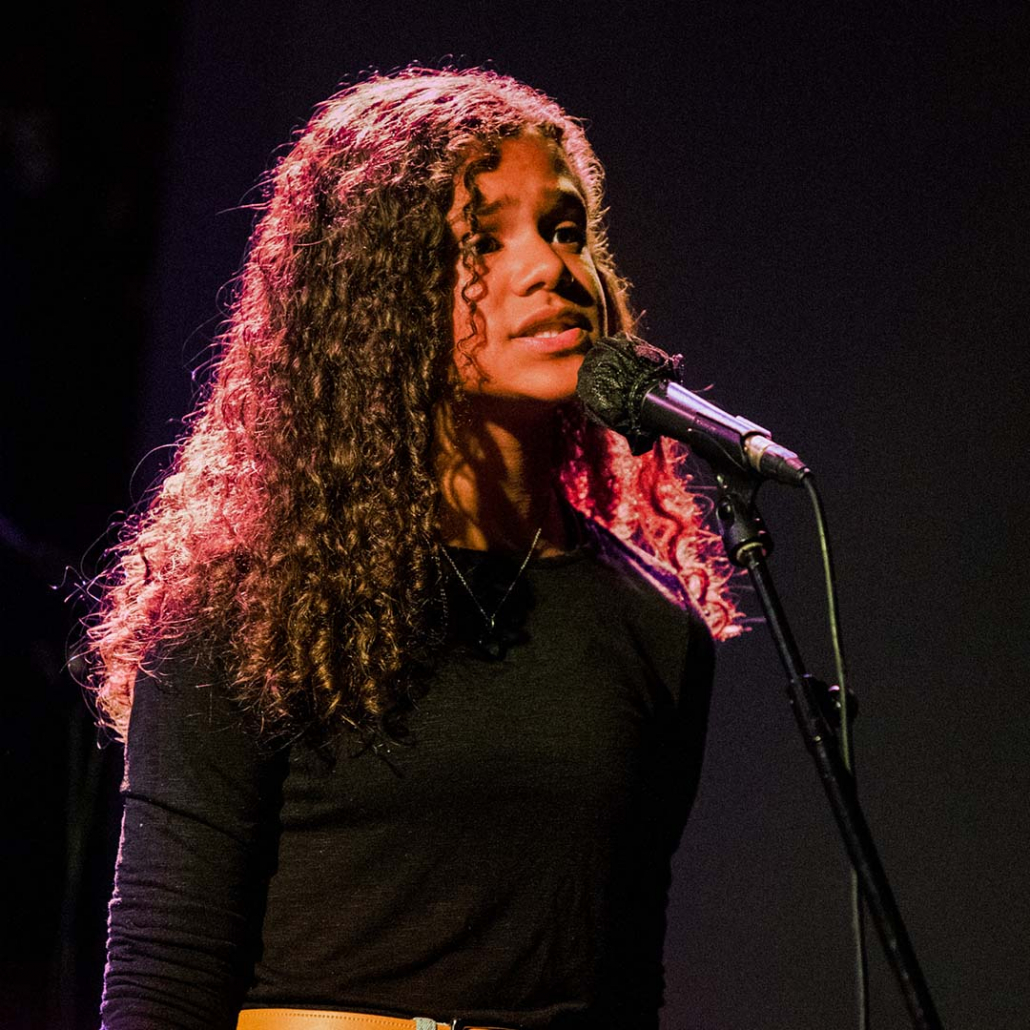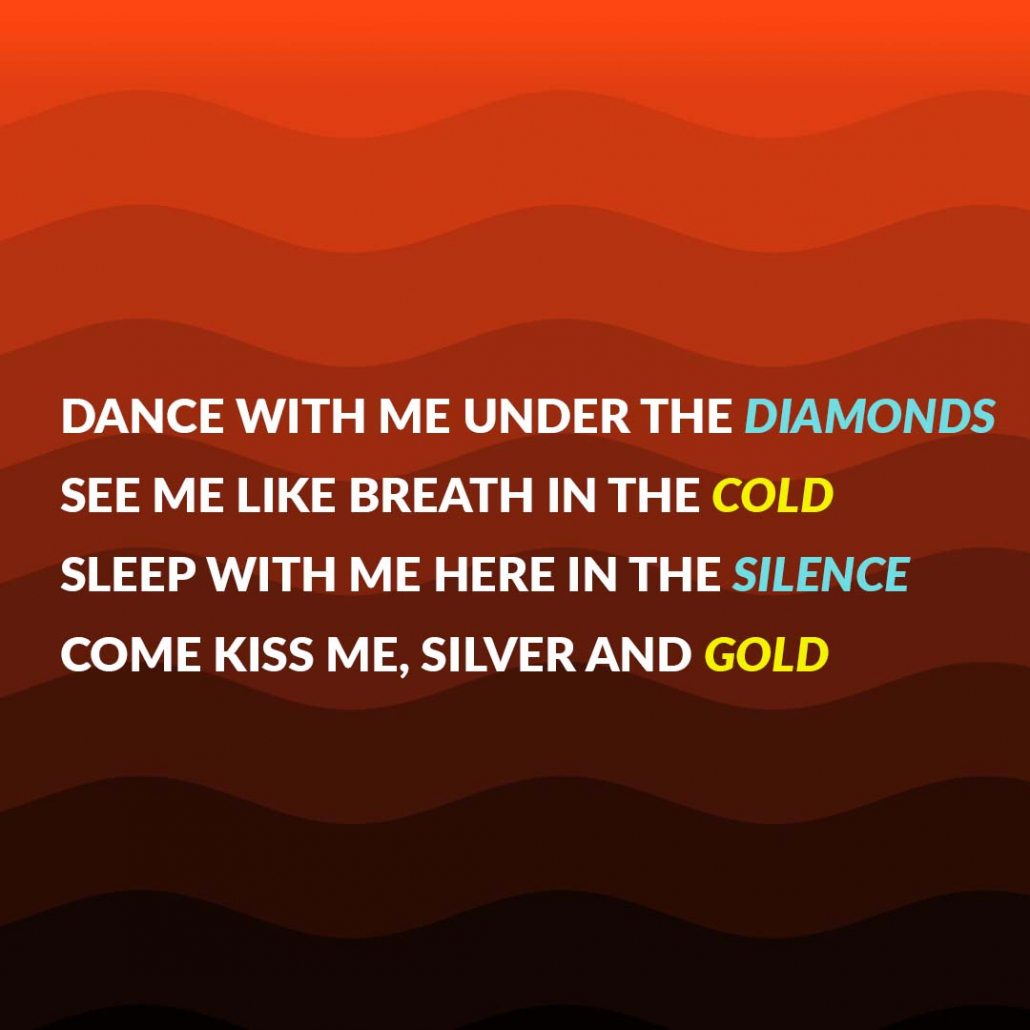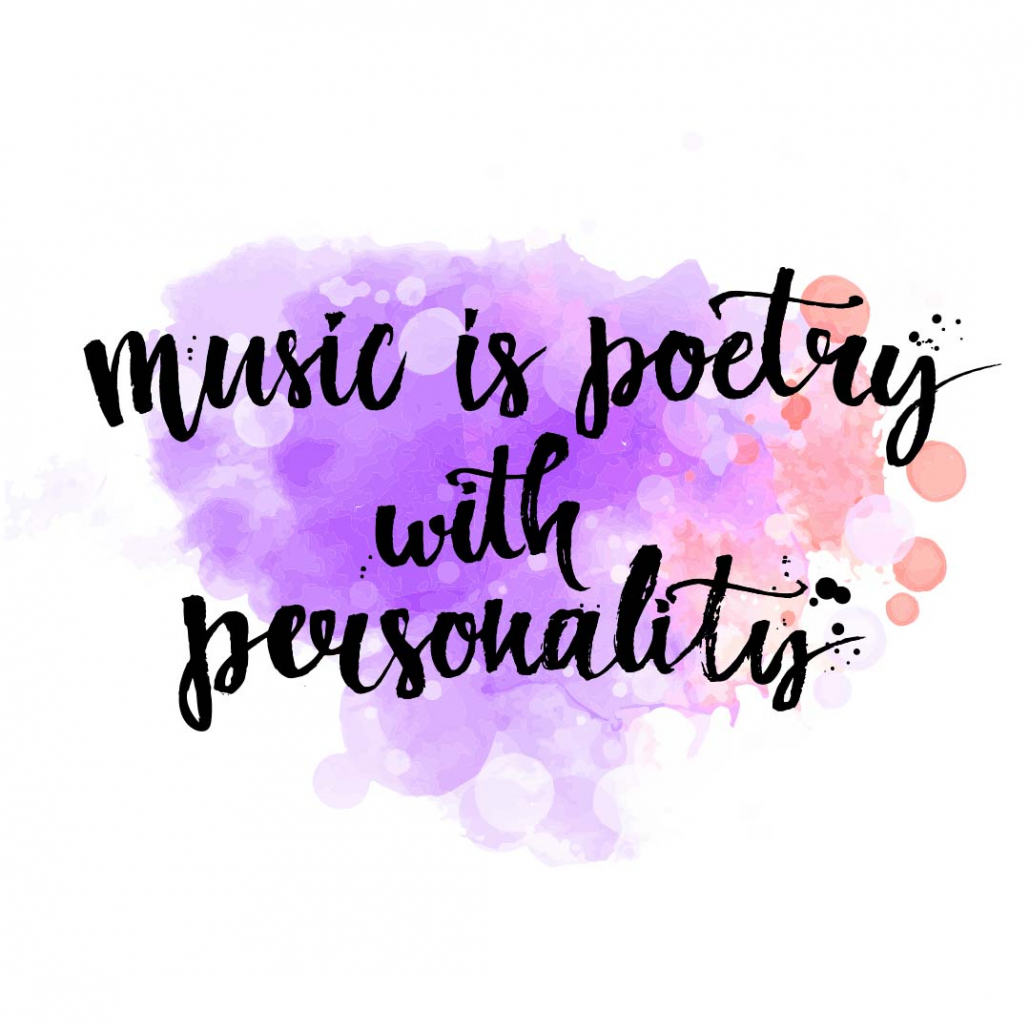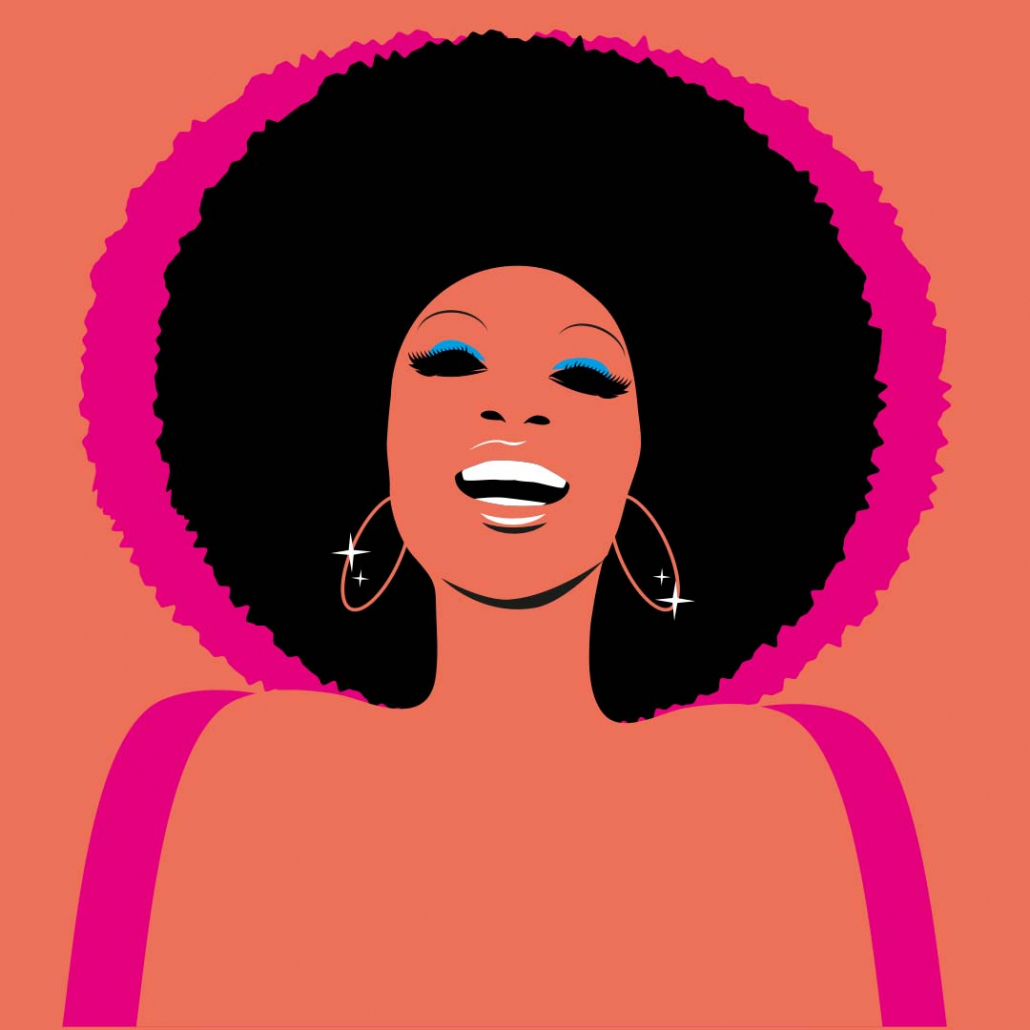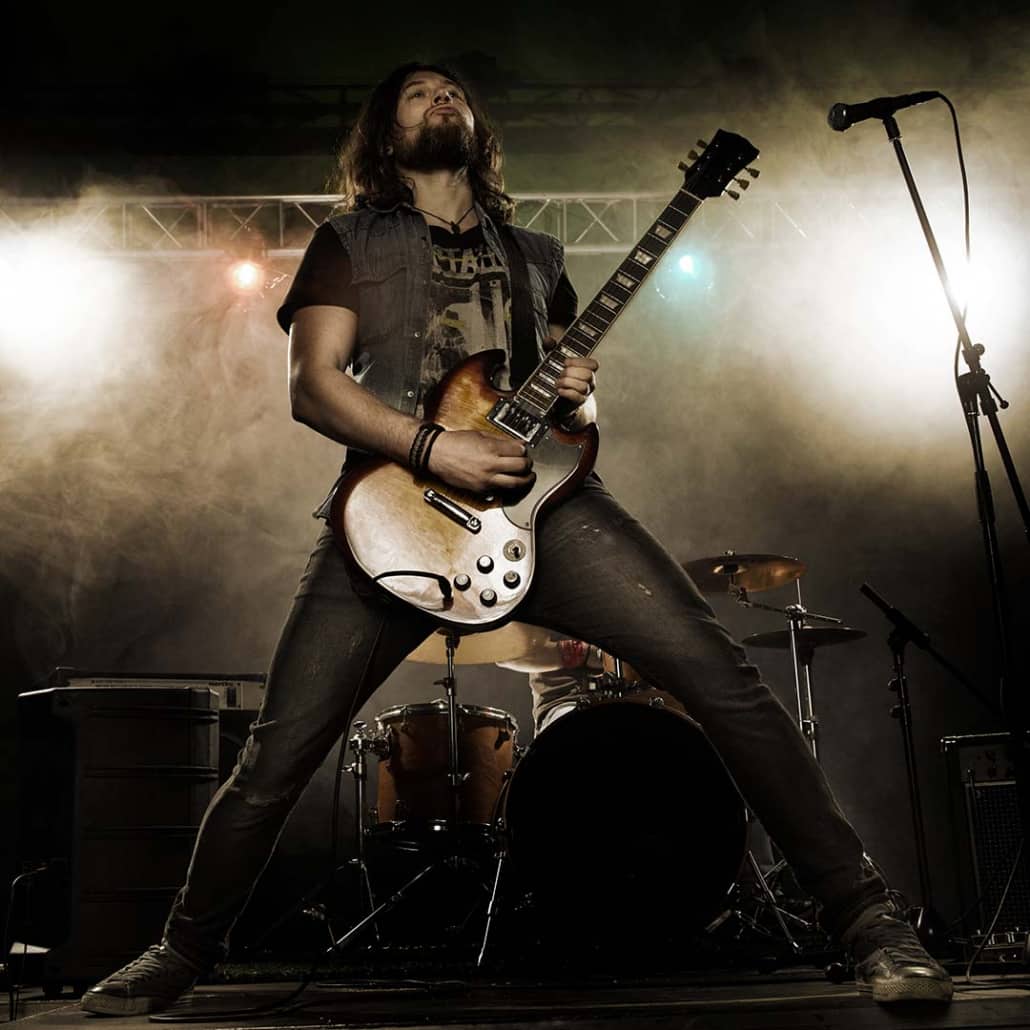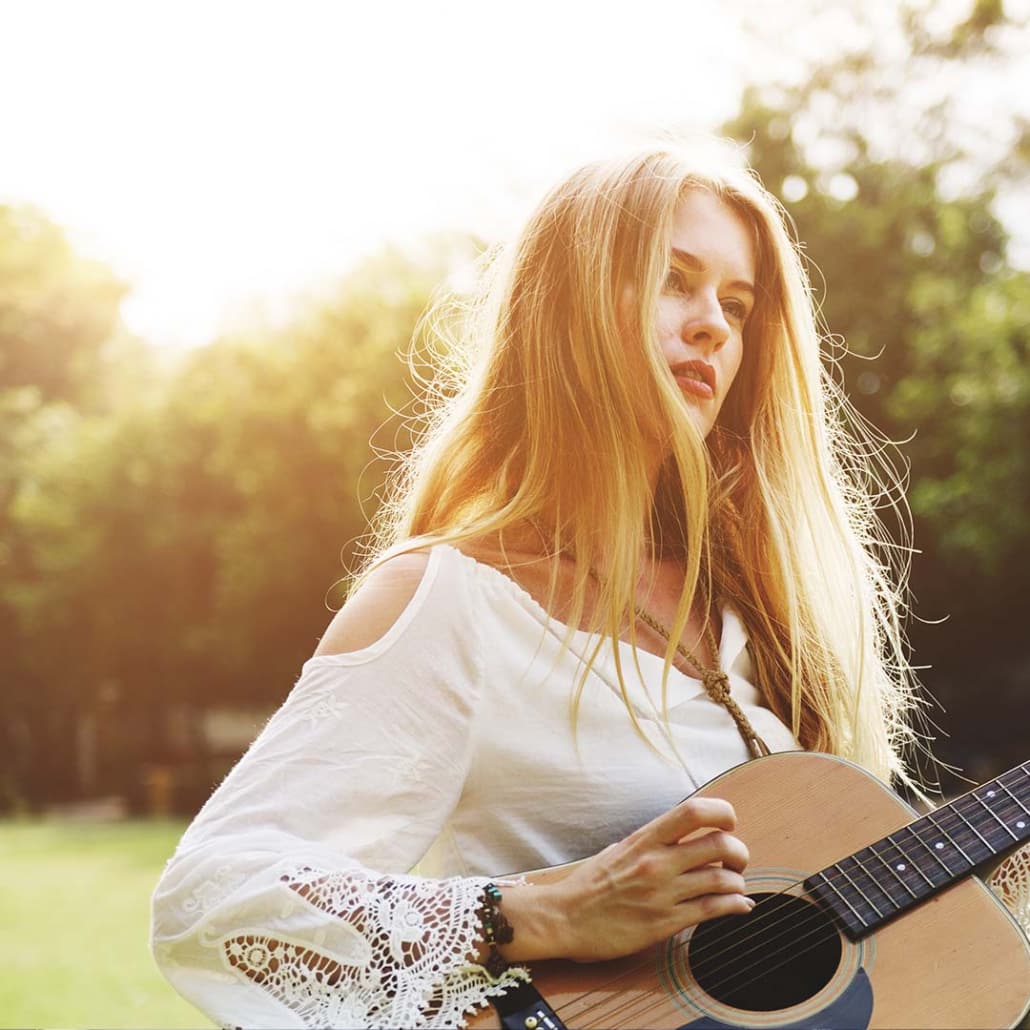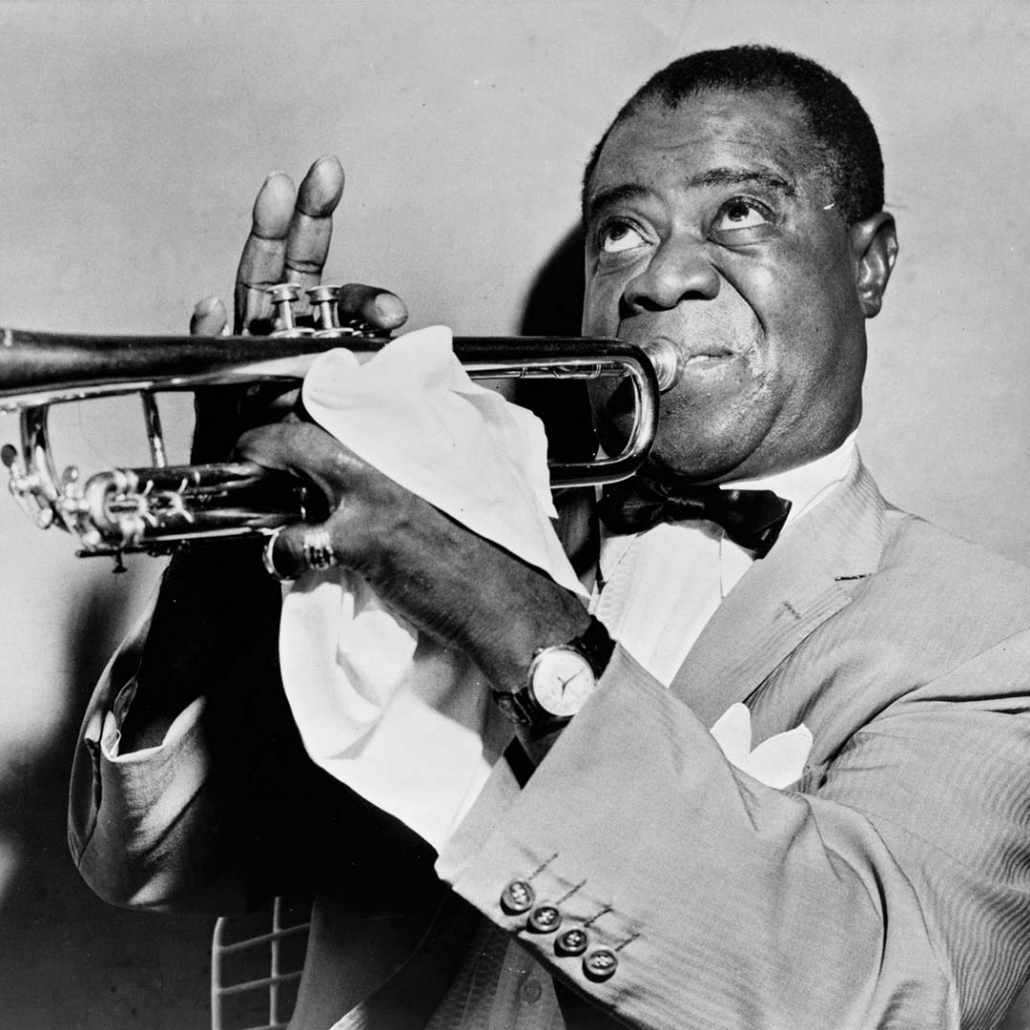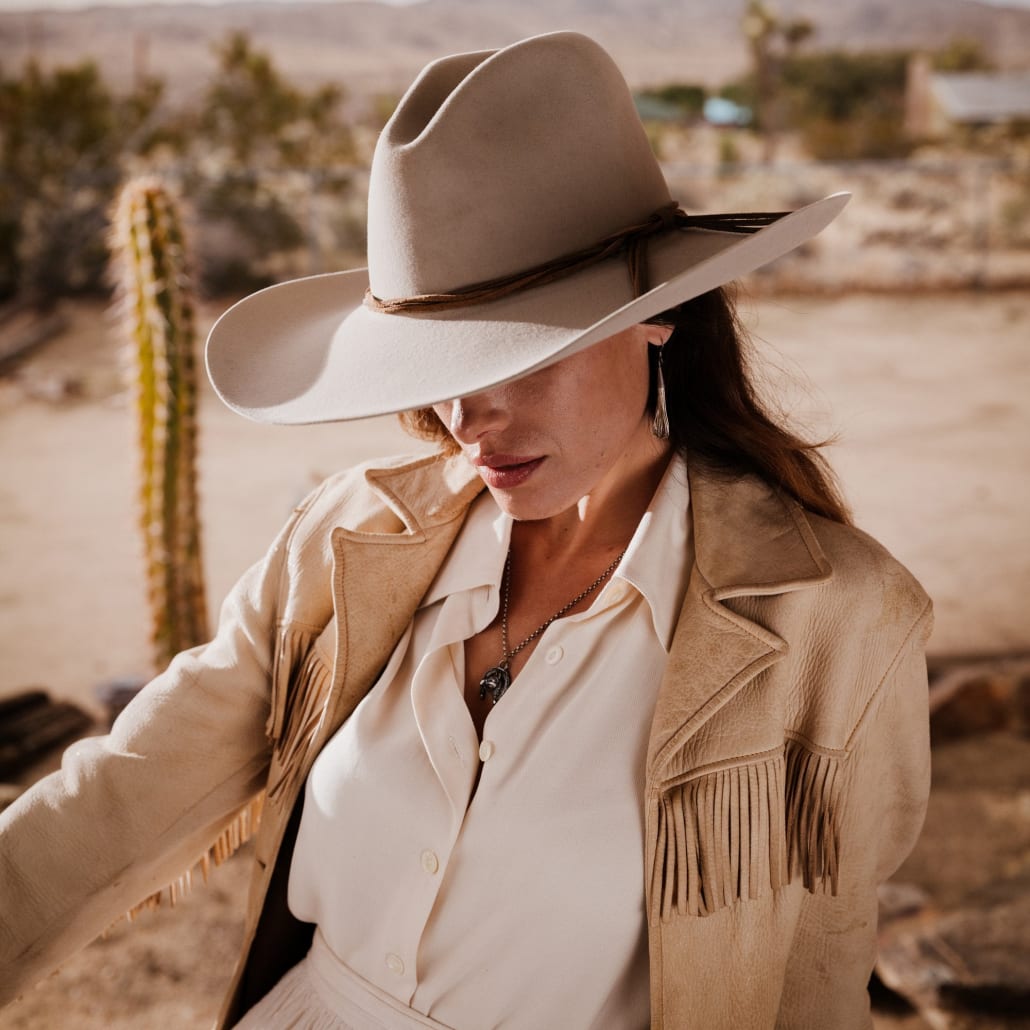Never written a song before? Here are some easy steps to get started!
STEP 1 Create a strong concept for your song & engaging title
First work out what style of song you’d like to write. Listen to some songs in different genres to get a feel of what style of song and topics you want to speak up about. Check out our suggestions of songs to inspire you
One of the key components, and biggest challenges, of songwriting is trying to express common, relatable feelings in an original and interesting way. The more inventive you can be when describing your feelings or experiences (for example, the pressures and joys of growing up and living in our society), the better.
Try these two ways of starting a song:
1. Select 5 things in your bedroom i.e bed, chair, window, guitar, books – and then turn them into interesting song titles. For example: Bed – Safe Haven, Chair – Where I’ll Stay, Guitar – Broken Strings, Books – Read All About It
2. Find a quote you like. For example: “It is never too late to be what you might have been”, “an obstacle is often a stepping stone”, “to avoid criticism, say nothing, do nothing, be nothing”, “your only limitation is your imagination”.
STEP 2 Start writing!
Thinking of your object or quote, focus your senses on it and write freely for 10 minutes non-stop. Anything goes. Use all 7 senses: sight, hearing, smell, taste, touch, organic (awareness of inner bodily functions, eg, heartbeat) and kinesthetic (your sense of relation to the world around you. For example, when the train you’re on is standing still and the one next to it moves, your kinethetic sense goes crazy!)
After your 10 minute writing exercise, think more about the lyrics you’ve written and write some rhyming couplets. Remember that lyrics have a rhythm and using different rhyming schemes can help to shape your lyrics and make your songs more engaging. Here are two rhyming schemes for you to start with:
A-A-B-B
lines 1 and 2 rhyme, and lines 3 and 4 share a different rhyme.
OR
A-B-A-B
lines 1 and 3 share a rhyme, and lines 2 and 4 share a different rhyme.
Choose the one that works best for you and the song that you are writing.
Below are some examples of well known songs that use both rhyming schemes:
‘Happy’ Pharrell Williams (Chorus) in AABB form.
A Clap along if you feel like a room without a roof
(Because I’m happy)
A Clap along if you feel like happiness is the truth
(Because I’m happy)
B Clap along if you know what happiness is to you
(Because I’m happy)
B Clap along if you feel like that’s what you wanna do
‘Anyone’ by Justin Bieber (Verse 1) in ABAB form.
A Dance with me under the diamonds
B See me like breath in the cold
A Sleep with me here in the silence
B Come kiss me, silver and gold
Once your rhyming couplets have been written, you can now count the syllables in each line. If you count the syllables whilst tapping your foot (creating a tempo) you will notice that you are naturally creating a rhythm. This can be extremely helpful when working out your melody and figuring out how long your lines are going to be. From here you can improvise melodies over the lyrics singing to the rhythm you have created. The song now can start taking shape before you have even come up with the chords!
Think about creating some metaphors with the words that are connected to your song to give your song a unique twist. Write a list of 5 interesting adjectives, then write a list of 5 interesting nouns. Think about each combination and write some sentences. Write a list of 5 interesting nouns and then 5 interesting verbs. Think about each combination and write some sentences. Write a list of 5 interesting nouns and then 5 interesting nouns. Think about each combination and write some sentences. You get the idea!
Once you have loads of lyrical ideas, organise them into the different sections of your song to build your song’s story. Try using the suggested song structure below starting with the lyrics for your chorus (the ones which paint a picture of the main message of your song).
Suggested Song Structure for your song:
Verse 1 — Introduces the song’s message and sets the scene
— 4 lines
A
A
B
B
or
A
B
A
B
Pre Chorus — Link between the verse and chorus
— Builds up both melodically and lyrically
— 2 lines
A
A
or
A
B
Chorus — Main message of the song
— Catchiest part and most memorable part of the song (normally includes a ‘hook’)
— Most dynamic part of the song
— 4 lines
A
A
B
B
or
A
B
A
B
Verse 2 — Continuing the explanation of the song
— Solidifying the message and introducing new imagery
— Lyrics change, melody stays the same as verse 1, possibly with a few small changes to keep it interesting
— 4 lines
A
A
B
B
or
A
B
A
B
Bridge or Middle Eight — A contrasting section that brings the song to a new level and adds depth
— Rhythmically and melodically the song changes
— Looking at the message from a different view point
— Can build up tension leading up to the climax of the song
— 4/8 lines
A
A
B
B
or
A
B
A
B
Chorus — Repeat (can add hooks to the outro of it)
Outro — The closing passage. It can be instrumental or vocal
Check out our examples of song structure including rhyming scheme and chord movements at the end of this blog post.
STEP 3 Create a chord progression and add a melody
There are three main chord progressions for songs in popular music. First, a bit of background about chords. A chord is a collection of notes played at the same time. The most simple chord is made up of 3 notes (called a triad). Every chord is built from a scale, and each scale has 7 separate notes (for example, in the key of C major there are C, D, E, F, G, A, B). Each note of a scale has a chord built from it and the order of these chords is referred to in the Roman numerals I, II, III, IV, V, VI, VII. The sequence of chords is the same in any major scale. I is major (‘happy’ sounding), II is minor (‘sad’ sounding), III is minor, IV is major, V is major, VI is minor and VII is diminished. A triad is made up of the I, III and V notes. These are called the primary chords as there are all major (for example, in the key of C major C, E, G).
The three main chord progressions are:
1. I, IV, V (Which is C, F, G when played in the key of C Major)
2. I, V, VI, IV (C, G, Am, F in C Major)
3. I, VI, II, V (C, Am, Dm, G in C Major)
Choose a key for your song and choose one of the three chord progressions, perhaps start with the key of C, E, F or G. Play your chords and improvise different melodies for your lyrics.
It works well to have different chord progressions for your verses, chorus and bridge. Here’s an example of the different chord movements between sections for ‘Castle On The Hill’ by Ed Sheeran.
Verse 1: Standard 4 chord progression to lay the foundations and set the scene
D – G – Bm – A (I – IV – VI – V)
Pre-Chorus: Change in movement, going to chord IV here creates a lift in the song and allows tension to build towards to chorus
G – A – D – G (IV – V – I – IV)
Chorus: With tension, comes release and the song feels like it needs to resolve from the pre-chorus leading into the chorus. The pre chorus ends on chord IV and the chorus starts on chord I which in musical terms is a plagal cadence which gives us the resolve we need.
D – G – Bm – A (I – IV – VI – V)
Verse 2:
D – G – Bm – A (I – IV – VI – V)
Middle 8: Chord progressions moves to minor first which helps convey the change in perspective in the song
Bm – G – D – A (VI – IV – I – V)
Soundtrap is a perfect tool for creating your song. Add instrumental parts and beats and sing in your melodies and harmonies!
Examples of song structure including rhyming scheme and chord movements
DYNAMITE by BTS
Chords that run throughout are Bm/Em/A/D (VI, II, V, I) which proves that great songs can be written with the same 4 chords running through the song.
Verse 1 — Introduces the song’s message and sets the scene
— 4 lines
A Shoes on, get up in the morn, cup of milk, let’s rock and roll
A King Kong, kick the drum, rolling on like a Rolling Stone
B Sing song when I’m walking home, jump up to the top, LeBron
B Ding dong, call me on my phone, ice tea and a game of ping pong
Pre Chorus — Link between the verse and chorus
— Builds up both melodically and lyrically
— 2 lines (In this case the pre is in 4 lines)
A This is getting heavy, can you hear the bass boom? I’m ready (woo hoo)
A Life is sweet as honey, yeah, this beat cha-ching like money, huh
B Disco overload, I’m into that, I’m good to go
B I’m diamond, you know I glow up, hey, so let’s go
Chorus — Main message of the song
— Catchiest part and most memorable part of the song (normally includes a ‘hook’)
— Most dynamic part of the song
— 4 lines
A ‘Cause I-I-I’m in the stars tonight
A So watch me bring the fire and set the night alight (hey)
B Shining through the city with a little funk and soul
B So I’ma light it up like dynamite, whoa oh oh
Verse 2 — Continuing the explanation of the song
— Solidifying the message and introducing new imagery
— Lyrics change, melody stays the same as verse 1, possibly with a few small changes to keep it interesting
— 4 lines
A Bring a friend, join the crowd, whoever wanna come along
B Word up, talk the talk, just move like we off the wall
A Day or night, the sky’s alight, so we dance to the break of dawn
B Ladies and gentlemen, I got the medicine, so you should keep ya eyes on the ball, huh
Bridge or Middle Eight — A contrasting section that brings the song to a new level and adds depth
— Rhythmically and melodically the song changes
— Looking at the message from a different view point
— Can build up tension leading up to the climax of the song
— 4/8 lines
In this instance BTS use this section as a post – chorus to reinforce the message of their song. This is very popular thing to do particularly in the most commercial sounding songs. Another example of a song using this technique is ‘Shape of you’ Ed Sheeran when he repeats: ‘Come on be my baby, come on’.
A Dy-na-na-na, na-na, na-na, ayy
A Dy-na-na-na, na-na, na-na, ayy
A Dy-na-na-na, na-na, na-na, ayy
B Light it up like dynamite
A Dy-na-na-na, na-na, na-na, ayy
A Dy-na-na-na, na-na, na-na, ayy
A Dy-na-na-na, na-na, na-na, ayy
B Light it up like dynamite
Chorus — Repeat (can add hooks to the outro of it)
Outro — The closing passage. It can be instrumental or vocal
As you can see from the example above, each section can have a different rhyme scheme so don’t feel like you need to be restricted to one.
BONES by MAREN MORRIS
Verse 1 — Introduces the song’s message and sets the scene
— 4 lines
Verse chords: G – D – Bm – A (IV – I – VI – V) (songs don’t always have to start with the first root chord!)
A We’re in the homestretch
B Of the hard times
A We took a hard left
B But we’re alright
Pre Chorus — Link between the verse and chorus Pre-chorus chords: G – D – Bm – A (IV – I – VI – V)
— Builds up both melodically and lyrically
— 2 lines (In this case the pre is in 4 lines)
A Yeah, life sure can try to put love through it,
A But we built this right, so nothing’s ever gonna move it
Chorus — Main message of the song
— Catchiest part and most memorable part of the song (normally includes a ‘hook’)
— Most dynamic part of the song
— 4 lines
Chorus chords D/F# – G – A – Bm (I – IV – V – VI) The chorus resolves to the root chord giving the song a perfect cadence
A When the bones are good, the rest don’t matter
A Yeah, the paint could peel, the glass could shatter
B Let it rain
B ’cause you and I remain the same
C When there ain’t a crack in the foundation (Introduces a new rhyme)
C Baby, I know any storm we’re facing
D Will blow right over while we stay put
D The house don’t fall when the bones are good
Verse 2 — Continuing the explanation of the song
— Solidifying the message and introducing new imagery
— Lyrics change, melody stays the same as verse 1, possibly with a few small changes to keep it interesting
— 4 lines
Verse chords: G – D – Bm – A (IV – I – VI – V)
A Call it dumb luck,
B But baby, you and I
A Can’t even mess it up,
B Though we both try
Bridge or Middle Eight — A contrasting section that brings the song to a new level and adds depth
— Rhythmically and melodically the song changes
— Looking at the message from a different view point
— Can build up tension leading up to the climax of the song
— 4/8 lines
Chorus chords D/F# – G – A – Bm (I – IV – V – VI)
In this instance Maren Morris repeats the chorus but varies the dynamics of the music to give the song a little twist. This is also common in pop music.
A Bones are good, the rest, the rest don’t matter (baby, it don’t really matter)
A Paint could peel, the glass could shatter (oh, the glass, oh, the glass could shatter)
A Bones are good, the rest, the rest don’t matter (ooh)
A Paint could peel, the glass, the glass could shatter (yeah)
Chorus — Repeat (can add hooks to the outro of it)
Outro — The closing passage. It can be instrumental or vocal
Now enter your songs into The Young Songwriter 2023 competition!
We can help you can your songs ready – we offer a song feedback service and you can join our Spring Term 2023 clubs and Holiday workshops.
